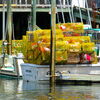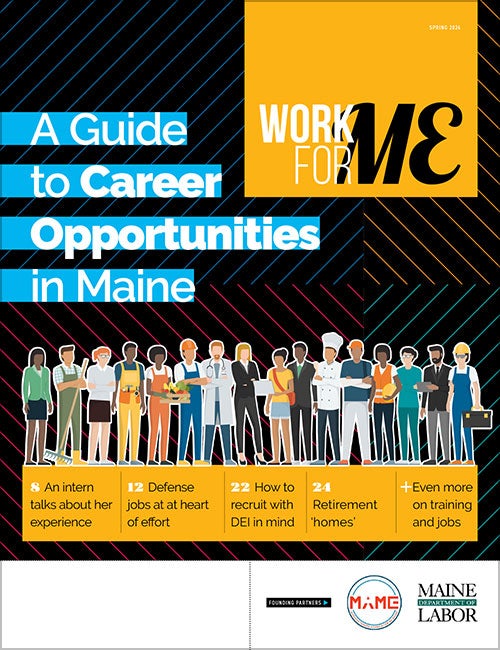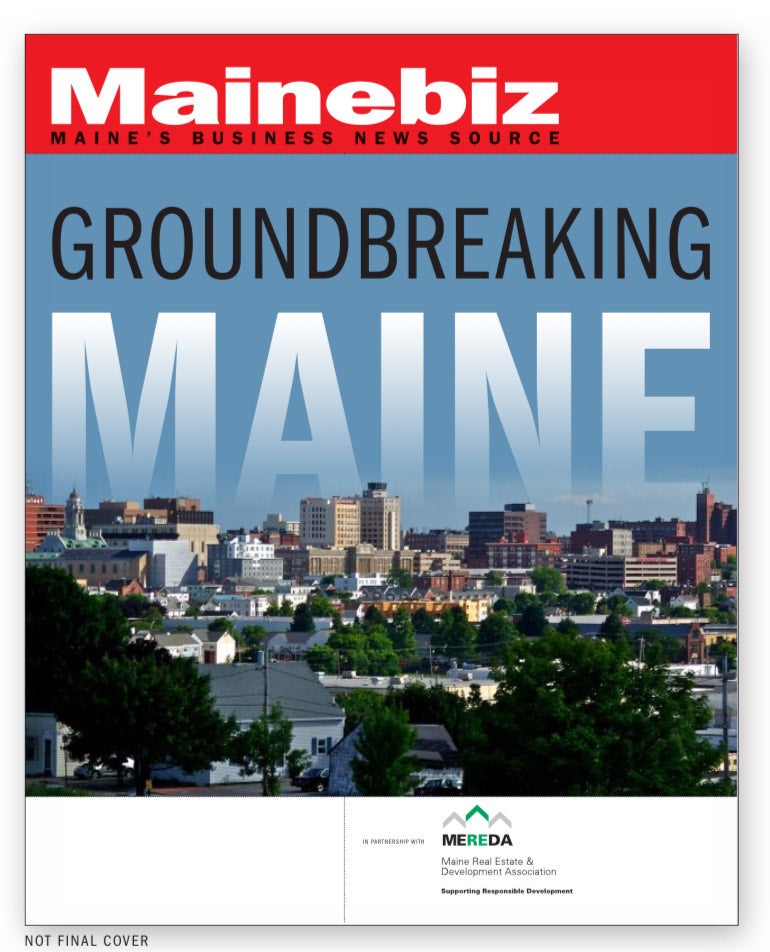Processing Your Payment
Please do not leave this page until complete. This can take a few moments.
Rounding the bases | After a shaky start, the Sanford Mainers reorganize and draw a crowd
In the summer of 2003, after their second season had just begun, the Mainers' newly formed board of directors took stock of the franchise and saw serious trouble. Low attendance and dwindling sponsorships almost meant the end of NECBL baseball in Sanford's historic Goodall Park. Many speculated that the team was for sale or would simply pull up its stakes at the end of the season.
Though Maine's cities and towns have rich baseball histories, successful baseball franchises here have been few and far between. Old Orchard Beach hosted the Maine Guides and Phillies, both AAA minor league teams, in the 1980s. But both the Cleveland Indians and Philadelphia Phillies pulled their franchises from the Ballpark in Old Orchard for financial reasons. An attempt to bring an independent minor league team to Bangor in the late 90s fizzled due to lack of interest (though minor league baseball returned to Bangor in 2003 with the Lumberjacks of the Can-Am League). The only real success story has been the Portland Sea Dogs, who have succeeded financially despite lackluster team performance in recent years.
Add to these facts Sanford's overall view that the local business leaders behind the Mainers were simply looking to make a buck, and the Mainers had the deck clearly stacked against them. It was only through some creative marketing and a wholesale reorganization that the Mainers turned things around.
The greater Sanford community responded to the revitalized team by showing up to games in droves ˆ including a franchise-record opening night last June, with a crowd of 1,258. The Mainers have now drawn 41,199 fans during their three years in York County. Seeing this, 80 local businesses have stepped up to sponsor the Mainers, including nearly 20 new sponsors in 2004.
The Mainers have examples of success in the NECBL's two New Hampshire franchises ˆ Keene and Concord. Last year, Keene became the first NECBL team to top 40,000 in season attendance; the team has been in contention for the league championship nearly every year since they began play in 1998. The Concord Quarry Dogs played their first season to rave reviews and drew 1,583 fans per game. Now, the NECBL is hoping for a similar result in Sanford, banking on the fact that the town can draw on its history with baseball and its current community spirit to win a loyal following ˆ and perhaps a few more championships. Team backers, too, hope to establish the Mainers as Sanford's trademark attraction, something the town will be known for across northern New England.
According to Kevin MacIlvane, commissioner of the NECBL, "A summer college baseball team is built around a community, just like a big-league team. [The difference is] our players live with the community with host families, who become surrogate families." MacIlvane continues, "A successful team adopts its community's identity and carries it everywhere they travel. In turn, the community supports the team, during both home and away games."
Suspicious minds
Founded in 1993 by former Cincinnati Reds and New York Mets great George Foster, the NECBL is one of the few remaining amateur leagues in the country that use wooden bats. Designed to be a proving ground for some of the nation's best collegiate players, the NCAA-sanctioned NECBL consists of 12 teams that play in all six New England states.
The NECBL is also officially sanctioned by Major League Baseball, and the quality of play in the league is comparable to that in the well-known Cape Cod League, to which the top amateurs have been flocking since 1885. The NECBL season begins in early June and runs for an eight-week, 42-game-per-team schedule, with playoffs in August.
In 2001, the NECBL courted Sanford for four months before a group of five businessmen ˆ H. Allen Mapes of Mapes Oil, Ron Woodward of Gallo Construction and Geoff Titherington of Bonanza, all in Sanford, plus Neil Olson of Olson's Furs, Tents & Baseball in Bethel and Rhode Island's Tom Hutton, a former NECBL commissioner ˆ agreed to help get the team off the ground. "These guys just loved baseball and wanted to bring it to Sanford," says Jeffrey Shain of Shain's of Maine Ice Cream in Sanford.
The group agrees it was their love of the game, an appreciation of Sanford's baseball history and the desire to help the community that got them involved. Olson, Mapes, Woodward and Titherington provided a total of $50,000 in initial funds in December 2001, and the Mainers were born just in time for the 2002 season.
The community greeted the Mainers with some skepticism. Many felt these initial funders were simply looking to turn a tidy profit on their investment. To show their displeasure, Sanford residents left Goodall Park mostly empty for Mainers games that first season.
The misunderstanding about the role of the startup group may have played a part in the rough start the Mainers faced, according to Gary Miller of Miller Auto in Sanford, who later became involved with the team. "I think there may have been some hard feelings initially," he says, "before everyone realized we were in this thing for the community, not to line our pockets."
Faced with a financial crisis that, according to Miller, included losses of "over $70,000" brought on by this lack of community support, the original startup group brought in what he says was some "new capital and fresh energy." After terminating their relationship with Tom Hutton, the startup group picked up five more members ˆ including Miller ˆ from the local business community.
Now, these funders are careful not to refer to themselves as "investors" or "owners." "Most of us never actually expected to get our money back," Titherington says, "since this was done for the good of the community." Adds Bob Hardison of Atlantic Pump & Engineering, one of the second round of funders, "There are no 'owners' of the Sanford Mainersˆ We saw it as a way to bring recognition to Sanford, provide baseball fans with quality baseball and low-cost family entertainment."
Hardison goes on to explain the nature of his and other funders' involvement: "The funds were provided in the form of no-interest loans with the understanding that if the team was successful, we may be able to retire the loans. We also chose to volunteer our time to help develop the organization and to work on behalf of the team as part of our initial commitment to the project."
In 2004, the Mainers reorganized as a 501c3 nonprofit organization. "We needed to be able to go to the community and say, 'Hey, we are just a bunch of baseball lovers donating our time and money to get this team going,'" says Miller. Their nonprofit status also allows the team to accept tax-deductible financial support. The group of volunteers who provided the startup funds became the new organization's board of directors. The organization is currently seeking new board members ˆ no financial contribution will be required ˆ to allow the original directors to rotate out.
Home-grown marketing
Even a collegiate-league team with 22 home games a year involves significant costs. The operating costs for one regular season are approximately $125,000, including $20,000 for transportation alone. The Mainers must pay a year-round, part-time business manager, plus coaches and umpires. "People didn't realize what kind of money it takes to have a baseball team," said Carol Foster, the team's business manager. "In addition to renting [Goodall Park] and paying the umpires, we need bats and balls, meals on the roadˆ The cost of busing is huge." (According to Town Manager Mark Green, the town leases the ballpark to the Mainers for a modest fee. In exchange, the team invests some of its proceeds in making improvements to the park.)
Despite the continued struggle to maintain reasonable cost levels and ticket prices, and some initial capital issues, Titherington of Bonanza reports that the team has "turned the corner and had a positive cash flow in 2004." The board of directors has kept ticket prices steady despite the critical need for cash. "We want to stay affordable," says Miller. "Our goal is to offer near-professional grade baseball for next-to-nothing ˆ at $5 a ticket and $1.50 for a hotdog, it's really an unbeatable deal."
Still, the Mainers continue to seek local support. "This team belongs to Sanford," Foster says, "but the town needs to help if they want [the team] to stay. We aren't self-sufficient; we don't make enough at the gate to pay our bills."
With a marketing budget of zero dollars, the Mainers' marketing and publicity plans rely on the generosity of local businesses as well as huge helpings of creativity. "Word of mouth is our most successful marketing tool," says Miller.
"We mostly focus on York County and down the New Hampshire seacoast," says Foster. "I know we don't want to compete with the [Portland] Sea Dogs. We want to reach families in this immediate area who are looking for affordable entertainment options." Miller agrees, saying, "Our board decided the Portland media ˆ and any media outside the Sanford area ˆ wasn't going to be easy to penetrate, and our efforts would best be spent reaching out to greater Sanford, York County and south."
Miller and the other directors work behind the scenes to make the team's marketing efforts successful. For example, a series of ads for Miller Auto's Ford dealership ran regionally on Metrocast Cablevision during last year's Red Sox games. The ads were paid for entirely out of Miller Ford's marketing budget, but included information about the Mainers as well as the dealership's message.
"These ads were a win-win for the team and for Miller Ford," says Titherington. "The Mainers get some publicity, and Miller Ford gets recognition for their stewardship of the team."
On a smaller scale, Broose D'Moose, the team's mascot, makes regular appearances at community functions, including skating rink events and telethons. Schedules of his appearances contain giveaway notices and discount coupons to entice new fans.
In addition, the directors have continued their volunteer involvement, highlighted by Miller's game-time promotions, including a between-innings ball toss, and Titherington's commitment to the concession business, where he is a fixture behind the counter at the grill.
The business connection
With ticket revenue such a minor player in their budget, the Mainers look to local businesses for support in the form of sponsorships. The 80 businesses that sponsor Mainers baseball support the team at levels ranging from $500 to several thousand dollars. Benefits of sponsorship include wall signs in Goodall Park, group tickets to games and merchandise. When pressed to name the team's top supporters, Miller would only respond, "It's not any one company, it's the whole community of businesses."
Titherington indicates that most businesses aren't looking to their sponsorships to generate more income, but rather for the "soft reasons, such as employee morale, community betterment and the opportunity to be associated with something positive." Titherington himself has sponsored the Mainers' printed pocket schedules each season. "I do not think I really get my $1,500 back in cash, but I do know that people appreciate having them," he says. "Someone who does an outfield sign for $1,500 would be hard pressed to prove that they got their money back in increased sales or business. But they are viewed as a sponsor of something good for the town of Sanford."
One of the best successes in last year's championship summer season, according to Titherington, were business nights. Businesses like CYRO's Sanford, a plastics manufacturer, and KeyBank bought large numbers of tickets (on which their business name was printed) and gave them to their employees. The promotion did more than raise revenue; it also brought new fans into the stands.
The team also generates goodwill by using community volunteers to staff games and provide other services. "I was amazed to see volunteers selling 'moose pies' and other goodies in the grandstands," says Green, the town manager, of his first Mainers game last summer. "The volunteers were local business people, team directors and chamber of commerce volunteers. Many of them wore Mainers hats with felt moose antlers attached. The whole scene just oozed community spirit."
The Sanford area also hosts all 25 players, as well as four or five interns and three or four coaches for the summer season. A volunteer makes matches between players and hosts, much like the arrangements made for visiting exchange students. Donna Gray, who works in the town office, hosted players last summer. Players told her that "everywhere they went, they were treated almost like royalty," she says. "Businesses such as the YMCA, hair salons, movie rental facilities, the bowling alley and many others gave price breaks or made them feel very welcome and appreciated in this community. It was definitely a positive situation all around."
That positive situation has Titherington looking forward. He and the Mainers have already signed more local players for the 2005 season to see if the team can broaden its media coverage. But he's after something bigger ˆ top billing in Sanford. "Many communities have something they are known for," says Titherington, citing the Lobster Festival in Rockland and the draw of skiing in Sugarloaf. "Sanford hasn't focused on anything yet. It is our hope to be known for the Sanford Mainers."










Comments